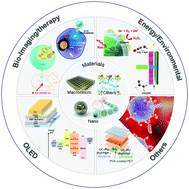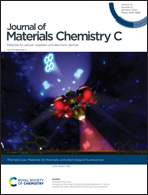Recent advances in materials for and applications of triplet–triplet annihilation-based upconversion
Abstract
Triplet–triplet annihilation upconversion (TTA-UC) has been attracting attention in various fields as a promising tool to efficiently generate a shorter-wavelength photon than incident light. Compared to conventional UC technologies (e.g., lanthanide-doped inorganic nanoparticles), TTA-UC has advantages of tunable spectral range and high UC efficiency (>1–40%) at non-coherent solar irradiance (Iex < 1–102 mW cm−2). This review article provides a succinct overview of the historical background and recent strategies for solving a critical problem (i.e. oxygen quenching) of TTA-UC to improve the efficiency and to expand its applicability in various fields. We also introduce recent strategies to develop host materials (e.g., films, polymers, nanocapsules, gels) for overcoming a quenching problem, before we detail recent progress in applications of TTA-UC materials involving bioimaging, biomedicines, photocatalysts, photovoltaics and OLEDs. This review article aims to highlight the challenges and recent advances in the field of TTA-UC, providing the readers with guidance and opportunities to join the research.

- This article is part of the themed collections: 2023 Journal of Materials Chemistry C Lunar New Year collection and Materials for thermally activated delayed fluorescence and/or triplet fusion upconversion


 Please wait while we load your content...
Please wait while we load your content...